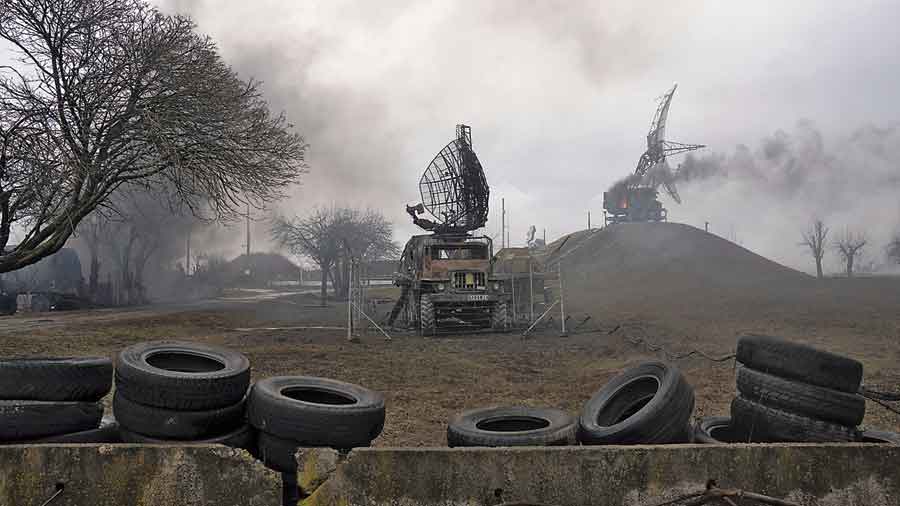In 36 days of fighting on Iwo Jima during World War II, nearly 7,000 Marines were killed. Now, 20 days after President Vladimir V. Putin of Russia invaded Ukraine, his military has already lost more soldiers, according to American intelligence estimates.
The conservative side of the estimate, at more than 7,000 Russian troop deaths, is greater than the number of American troops killed over 20 years in Iraq and Afghanistan combined.
It is a staggering number amassed in just three weeks of fighting, American officials say, with implications for the combat effectiveness of Russian units, including soldiers in tank formations. Pentagon officials say a 10 per cent casualty rate, including dead and wounded, for a single unit renders it unable to carry out combat-related tasks.
With more than 150,000 Russian troops now involved in the war in Ukraine, Russian casualties, when including the estimated 14,000 to 21,000 injured, are near that level. And the Russian military has also lost at least three generals in the fight, according to Ukrainian, Nato and Russian officials.
Pentagon officials say that a high, and rising, number of war dead can destroy the will to continue fighting. The result, they say, has shown up in intelligence reports that senior officials in the Biden administration read every day: One recent report focused on low morale among Russian troops and described soldiers just parking their vehicles and walking off into the woods.
The American officials, who spoke on the condition of anonymity to discuss operational matters, caution that their numbers of Russian troop deaths are inexact, compiled through analysis of the news media, Ukrainian figures (which tend to be high, with the latest at 13,500), Russian figures (which tend to be low, with the latest at 498), satellite imagery and careful perusal of video images of Russian tanks and troops that come under fire.
American military and intelligence officials know, for instance, how many troops are usually in a tank, and can extrapolate from that the number of casualties when an armoured vehicle is hit by, say, a Javelin anti-tank missile.
The high rate of casualties goes far to explain why Russia’s much-vaunted force has remained largely stalled outside Kyiv, Ukraine’s capital.
“Losses like this affect morale and unit cohesion, especially since these soldiers don’t understand why they’re fighting,” said Evelyn Farkas, the top Pentagon official for Russia and Ukraine during the Obama administration. “Your overall situational awareness decreases. Someone’s got to drive, someone’s got to shoot.”
But, she added, “That’s just the land forces.” With Russian ground forces in disarray, Putin has increasingly looked to the skies to attack Ukrainian cities, residential buildings, hospitals and even schools. That aerial bombardment, officials say, has helped camouflage the Russian military’s poor performance on the ground. President Volodymyr Zelensky of Ukraine said this week that an estimated 1,300 Ukrainian soldiers had been killed in the war.
Signs of Russia’s challenges abound. Late last week, Russian news sources reported that Putin had put two of his top intelligence officials under house arrest. The officials, who run the Fifth Service of Russia’s main intelligence service, the FSB, were interrogated for providing poor intelligence ahead of the invasion, according to Andrei Soldatov, a Russian security expert.
“They were in charge of providing political intelligence and cultivating networks of support in Ukraine,” Soldatov said in an interview. “They told Putin what he wanted to hear” about how the invasion would progress.
Russians themselves may be hearing only what Putin wants them to hear about his “operation” in Ukraine, which he refuses to call a war or an invasion.
(New York Times News Service)











